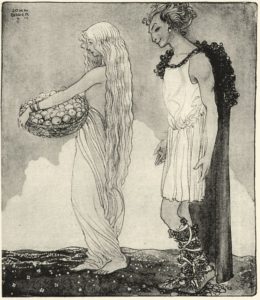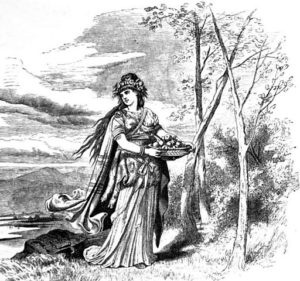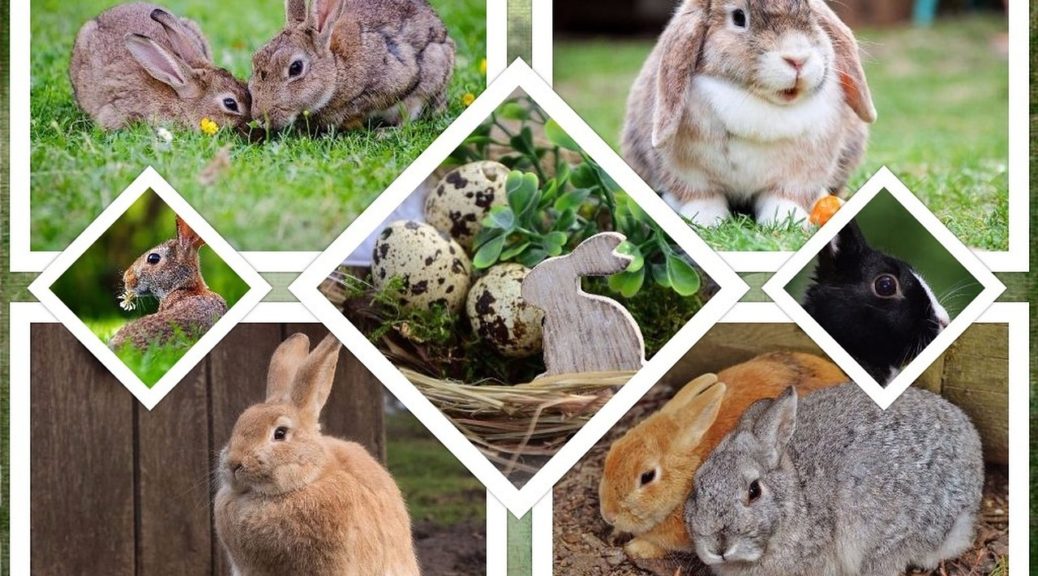Searching for Idunn’s Apples: The Secret to Eternal Youth
 It’s Hel getting old. As one who is now considered “middle aged” (assuming I live to 100), the quest for Idunn’s apples in the form of immortality, or at least eternal youth, interests me. It probably interests you too, even if you’re young and have many years ahead of you. After all, we can’t enjoy life if we’re dead. Funny, scientists have that very same opinion. I just wish they’d work harder at it, seeing as we’re not getting any younger.
It’s Hel getting old. As one who is now considered “middle aged” (assuming I live to 100), the quest for Idunn’s apples in the form of immortality, or at least eternal youth, interests me. It probably interests you too, even if you’re young and have many years ahead of you. After all, we can’t enjoy life if we’re dead. Funny, scientists have that very same opinion. I just wish they’d work harder at it, seeing as we’re not getting any younger.
Do We Really Have an End-By Date?
I read a piece in the New York Times recently about a study that suggests that humans haven’t reached the top end of their expiration date. They studied a bunch of really old people (older than me!) who lived in Italy. The researchers found that the death rate increases up to the age of 80 (duh!), decreases until 105 (what?), and then plateaus after 105. This contradicts the announcement made by scientists at the Albert Einstein College of Medicine that the human lifespan is fixed and that the upper level is 115.
The reason why this new study suggests that we have an end-by date further than 115 years, if we indeed have such a date, is the plateau in the death rate after 105. If there was really an expiration date of 115 years, we should see an increase in deaths as people get closer to it. That doesn’t mean that people don’t die; it just means that the percentage is stable.
 That Which Does Not Kill Us…
That Which Does Not Kill Us…
Never mind that the scientists at the Albert Einstein College of Medicine are a bunch of killjoys with their prediction, I tend to think that they may be close to the truth. Human experience suggests that we all have an expiration date of some variety, although what kills us is purely up to conjecture. If tomorrow we were to eliminate all disease, how long people would actually live before they simply fell apart? And then, the question remains is — do we really want to live longer if we’re infirm or decrepit?
Aging and Telomeres
The problem with getting older is that we’re not just “shorter of breath and one day closer to death,” as Pink Floyd so aptly put it. The problem is we’re not as robust as we were when we were younger. We don’t bounce back quite as quickly. Living a long life is great — if you have the youth to live it. Otherwise, you could spend your last years in a nursing home getting fed through a tube.
But could we actually stop aging? Scientists are getting closer every day to unraveling the secrets. We know that at least part of aging is due to the length of the telomeres in our DNA. Telom eres are the little end caps on our chromosomes. The longer the telomeres, the younger our cells remain. The shorter the telomeres, the more aged our bodies become. People can lengthen their telomeres through diet, exercise, and other healthy habits and can shorten them by doing unhealthy things like smoking. Some pills are purported to increase the telomere’s length by increasing telomerase (an enzyme), but there may be some serious side effects. Basically, telomerase may be Idunn’s apples, but like Idunn’s apples, we don’t know if she needs to pick them and hand them to everyone to get the full effect.
eres are the little end caps on our chromosomes. The longer the telomeres, the younger our cells remain. The shorter the telomeres, the more aged our bodies become. People can lengthen their telomeres through diet, exercise, and other healthy habits and can shorten them by doing unhealthy things like smoking. Some pills are purported to increase the telomere’s length by increasing telomerase (an enzyme), but there may be some serious side effects. Basically, telomerase may be Idunn’s apples, but like Idunn’s apples, we don’t know if she needs to pick them and hand them to everyone to get the full effect.
Let’s Talk About Idunn’s Story
 Everything ages in our world. Our gods would age too, if it weren’t for Idunn (Iðunn) and her apples. Loki the master trickster was tricked by the Jotunn, Thjazi (Þjazi), to steal Idunn and her apples for him. Loki obliges, but also rescues Idunn from Thjazi.
Everything ages in our world. Our gods would age too, if it weren’t for Idunn (Iðunn) and her apples. Loki the master trickster was tricked by the Jotunn, Thjazi (Þjazi), to steal Idunn and her apples for him. Loki obliges, but also rescues Idunn from Thjazi.
Some experts believe that the apples are the symbols of fertility, given that apples show up elsewhere in Norse and Celtic stories as just that. To add more to this theory, Loki turns Idunn into a nut during his rescue (he’s in falcon form) so he might carry her safely. Nuts were often a symbol of fertility in Anglo-Saxon England. Eternal youth could easily be linked to fertility, because, let’s face it, younger people do fuck like rabbits. So, it’s not a surprise that Idunn would be linked to fertility as much as Freyja is.
 So, is this a story about the stealing of fertility and the recovery of it? Or is this the story of the loss of youth and the recovery of it? Maybe it’s both.
So, is this a story about the stealing of fertility and the recovery of it? Or is this the story of the loss of youth and the recovery of it? Maybe it’s both.
I look at Idunn’s apples now as the telomeres in our chromosomes. Thjazi steals them away with time, but maybe, like Loki our scientists will figure out a way to increase our telomerase and get back Idunn and her apples.




.jpg)

